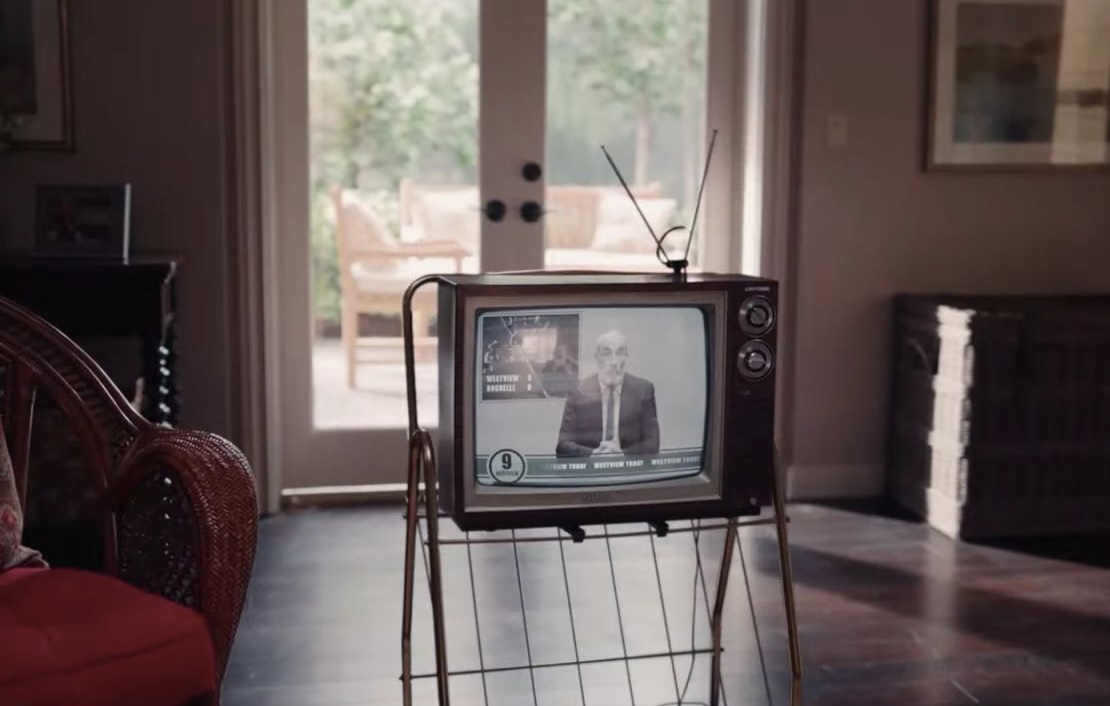WandaVision - TV series about series
One of my all-time favorite (and important!) series in terms of storytelling is WandaVision.
It is a Marvel series, released in early 2021 on the Disney+ streaming service, when the owners of the film universe realized that they could not expect any profit from the big screens. And they got it right: The series about the family life of Scarlet Witch Wanda and artificial intelligence Vision's is absolutely roofie!
I'll tell you why it's so great in terms of storytelling, but be warned: there will be spoilers!
It is a Marvel series, released in early 2021 on the Disney+ streaming service, when the owners of the film universe realized that they could not expect any profit from the big screens. And they got it right: The series about the family life of Scarlet Witch Wanda and artificial intelligence Vision's is absolutely roofie!
I'll tell you why it's so great in terms of storytelling, but be warned: there will be spoilers!
The highlight of the series is that its plot is built through the history of American serial history! It's not until the middle of the story that we begin to realize that everything that happens is a figment of Wanda's imagination, which she has brought to life, so the beginning can be a little confusing.
But in fact, it's a very thoughtful and competent series, because each episode here represents a different stage from the formation of American sitcoms with their key features from the 1950s to the present day.
It turns out that we're watching a series that Wanda herself produced, and it's like she's reminding us that television is always an illusion that can't be taken seriously.
But in fact, it's a very thoughtful and competent series, because each episode here represents a different stage from the formation of American sitcoms with their key features from the 1950s to the present day.
It turns out that we're watching a series that Wanda herself produced, and it's like she's reminding us that television is always an illusion that can't be taken seriously.


Let's go into more detail
Episode 1 - 1950s, the era of black-and-white sitcoms
This series replicates the earliest TV shows with excessive theatricality, GAGs, off-screen laughter, and 3-camera footage. There are many references to "I love Lucy" and the "Dick Van Dyke Show".
And we see that Wanda watched one of these shows as a child - which led her subconscious to this fusion of real life and serial reality.


An interesting "promotional episode" of this series is the toaster made by Stark Industries, which even flashes the same way as the rocket that destroyed little Wanda's life.
Series 2 - 1960s, more dynamics and feminism
The main theme of this series is to try to hide your abilities, like in "Bewitched". Even the title sequence is a reference to that show. This series also shows more female power and feminism, just like the shows of the time. For example, Wanda wears pants while the other women wear skirts. Wanda even moves the different beds on which the characters sleep, as was the custom in America at the time.

Here we also see references to the TV series "I dream of Jeannie", as well as to the more modern film Pleasantville, when colour accents start to appear in the frame. And the first colour that appears is red, which also turns out to be very symbolic.

Episode 3 - 1970s, More Colors, More Conflict
The references for this series are The Brady Bunch (credits), and by vibe, Happy Days, Mork and Mindy. And just like in the '70s, when all of America pretended on TV that nothing was going on (no Vietnam War, no racial discrimination), here too both Wanda and Vision pretend that everything is okay, and Wanda is not going to have babies the day she starts her pregnancy.
Another of the traits of sitcoms of the time is the attempt to hide the main character's pregnancy behind vases and sweaters.
Another of the traits of sitcoms of the time is the attempt to hide the main character's pregnancy behind vases and sweaters.

The episodes that this series is inspired by, Wanda was watching in prison when she was being turned into a villain.

Episode 4 - Sentimental 1980s
Now we are in the series Full House. The funny thing is that the actresses' older twin sisters, Mary-Kate and Ashley Olsen, played on this show. Well, you definitely remember this couple from the '90s and '0s.

The key theme of these episodes is that the characters must learn an important lesson from what has happened. This is the kind of important and sentimental episode that was often seen in the series of that time. In addition, Wanda and Vision's conflicts appear here, indicating the development of their couple. And the fact that over time TV didn't show perfect couples anymore, but real problems.

Series 6 - 1990s and 2000s where you don't have to die at all
In this episode, we immediately see that the characters (the twins) practically break the "quarter wall" and periodically talk to us.

It copies the style of the show "Malcom in the Middle" that Wanda was watching when Pietro, her twin brother, died.

He, by the way, also appears in this series, but played by a different actor, which hints us at the multiverse. It also maintains the vibe of that show from the early 2000s, where no one really gets seriously hit, much less die. It's not like Pietro died in the end!

And this is where Wanda and Vision's costumes appear for the first time as in the original comics!
Episode 7 - 2010s and Modernity
Here, too, Wanda is talking directly to us, as if she were participating in the filming of a documentary about her family. This technique is actively taken from the show "Modern Family", as well as known to us from the very famous series "The Office", where the characters were constantly talking to invisible operators. And here we also see how Wanda's universe begins to collapse - things from other eras make their way through time, and she realizes - something is not right here.

And note the funny music in the background - similar soundtracks were used all the time in the late 2000s and early 10s! And the camera shakes as if we were peeking at the characters, which was also popular and on the go.
Series 8 and 9 remind us not of a sitcom, but rather of "Lost" and "Buffy the Vampire Slayer", with their darkness, dynamics and general atmosphere. And as a whole, Wanda's illusion is already crumbling here, we see how and at what point her love of TV got mixed up with her grief at the loss of her parents, her brother, her lover. Each era presents us with its own ideals of life, whether it be the 60s, 80s, or 90s.

At the end of the story, Wanda, like the hero of any good sitcom, learns the most important lesson: that all those we have lost, in fact, always remain within us.
Do you want to master the Art of Storytelling?
Online Course
"Storytelling Basics: How to Tell Your Story"
"Storytelling Basics: How to Tell Your Story"
Lesson 1 - Introduction
Lesson 2 - What is storytelling
Lesson 3 - How storytelling influences our brain
Lesson 4 - What makes a good story - Key Elements
Lesson 5 - Story structure
Lesson 6 - Types of conflicts
Lesson 7 - What makes your story personal
Lesson 8 - How to craft a good story
Lesson 9 - A few words about storylines
Lesson 10 - Where to use storytelling
Lesson 2 - What is storytelling
Lesson 3 - How storytelling influences our brain
Lesson 4 - What makes a good story - Key Elements
Lesson 5 - Story structure
Lesson 6 - Types of conflicts
Lesson 7 - What makes your story personal
Lesson 8 - How to craft a good story
Lesson 9 - A few words about storylines
Lesson 10 - Where to use storytelling
